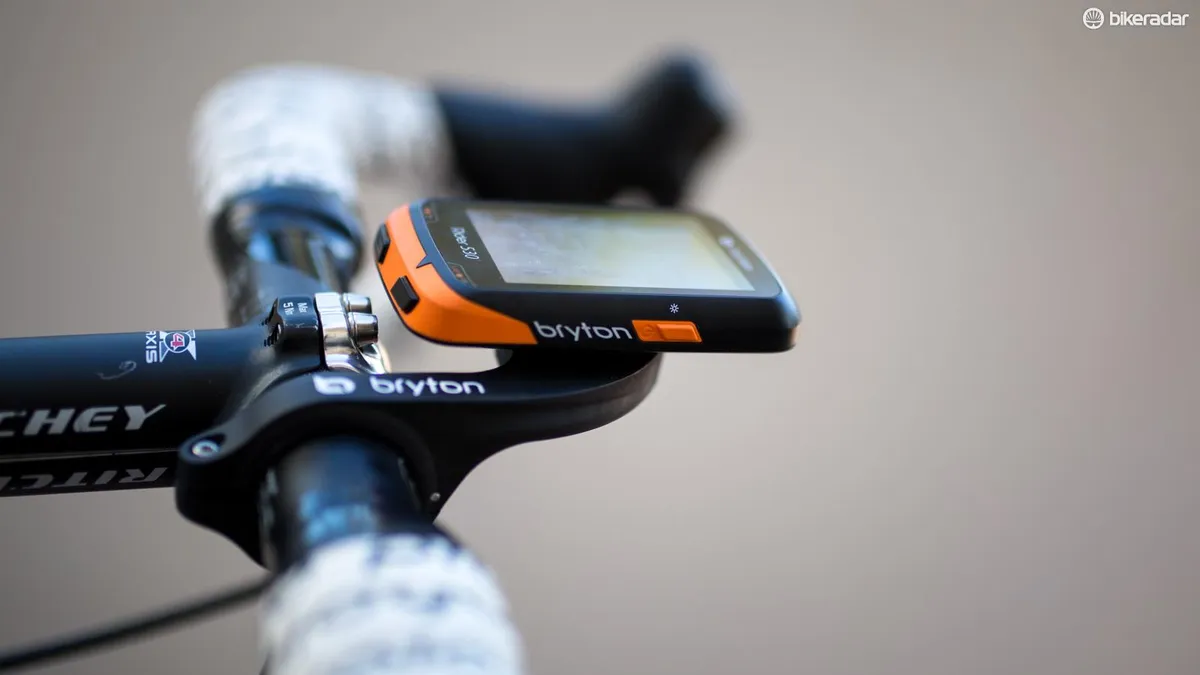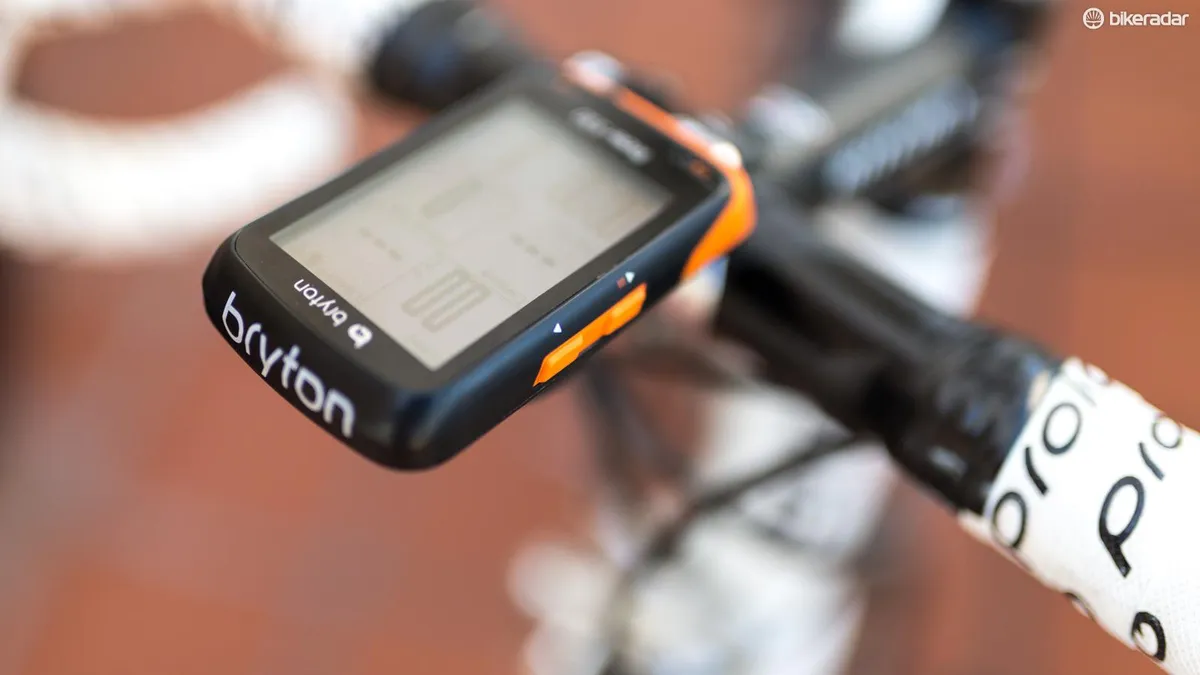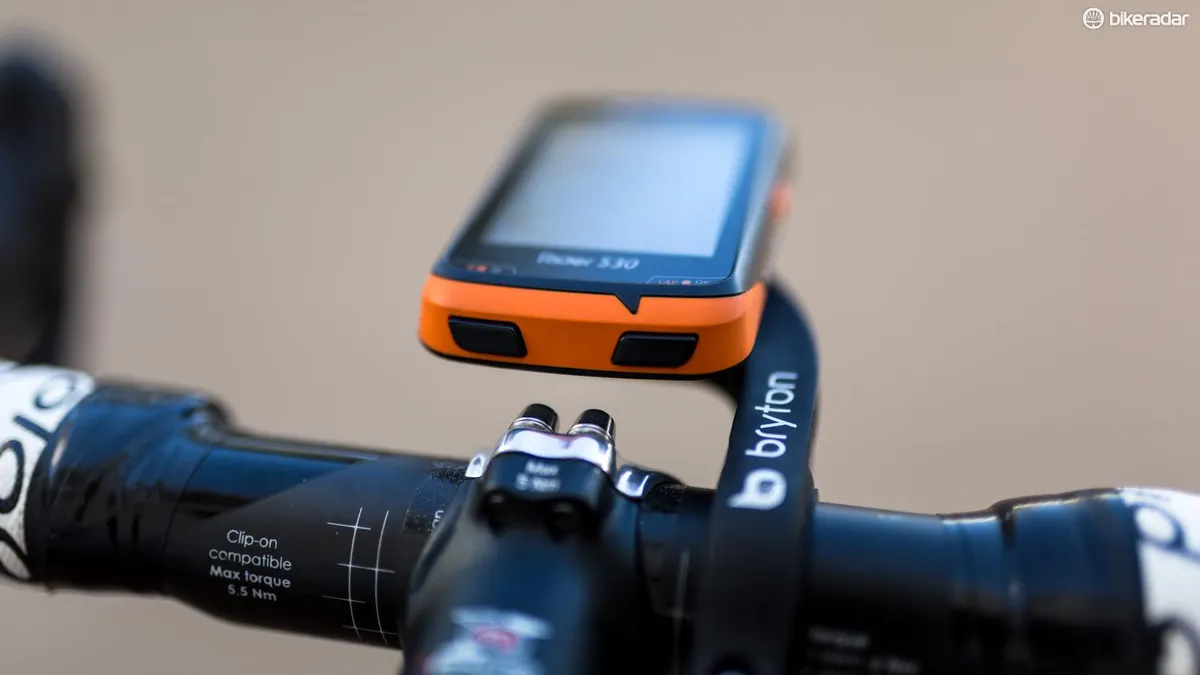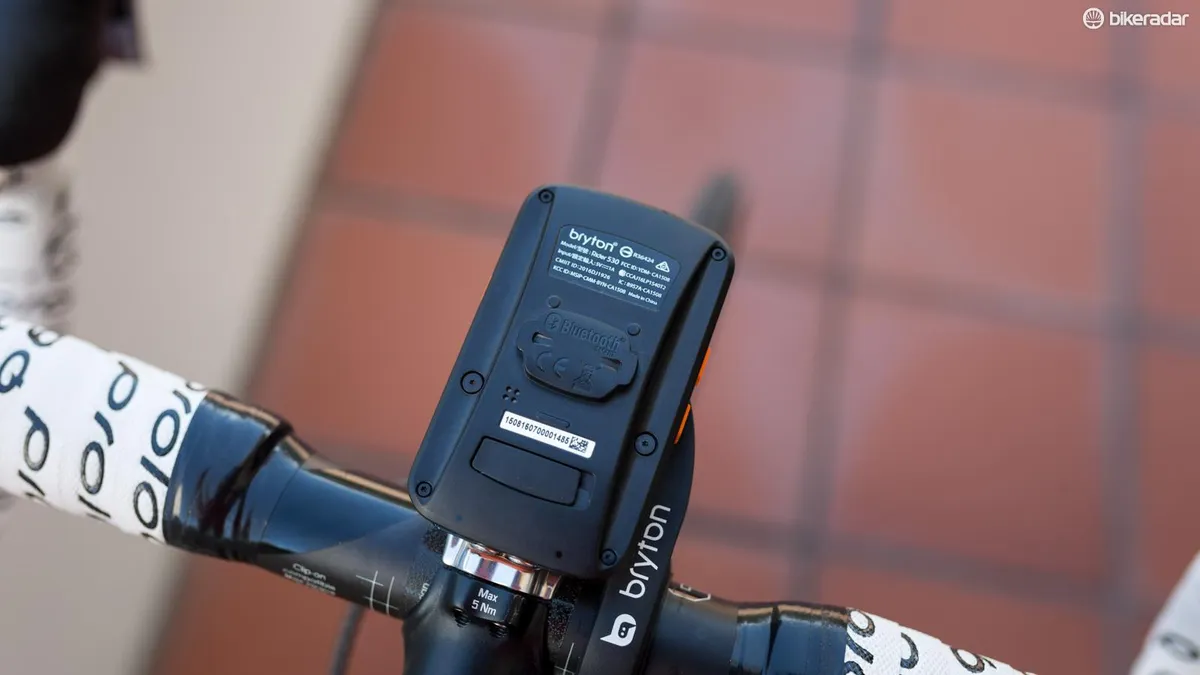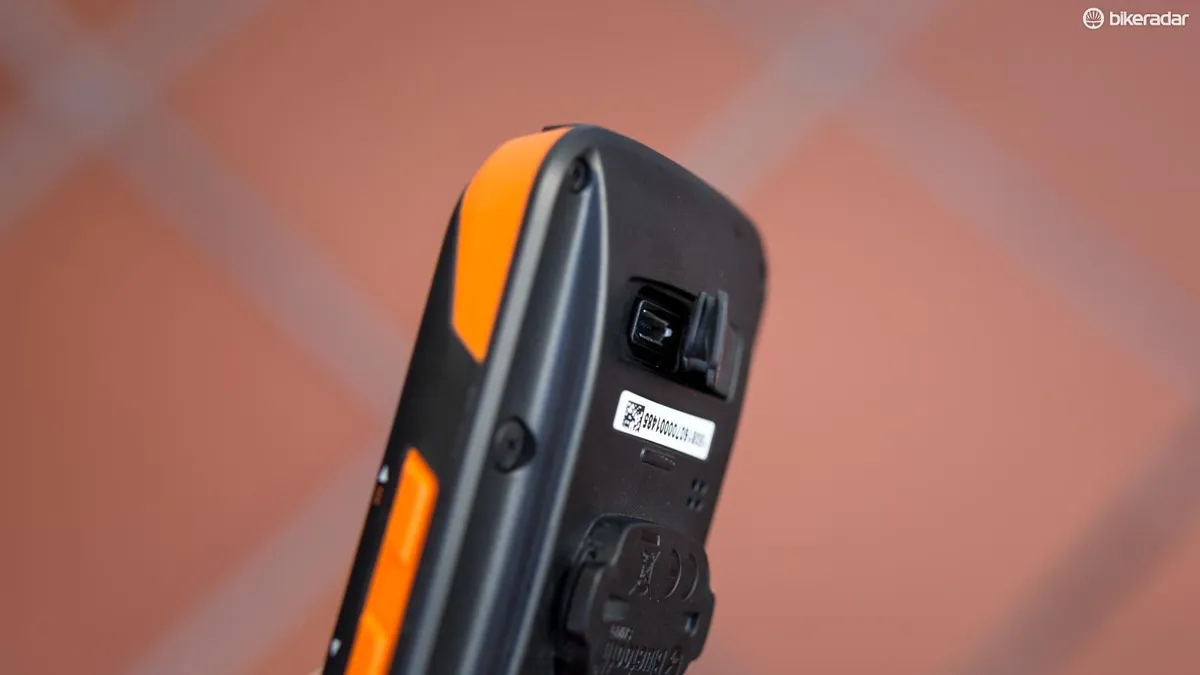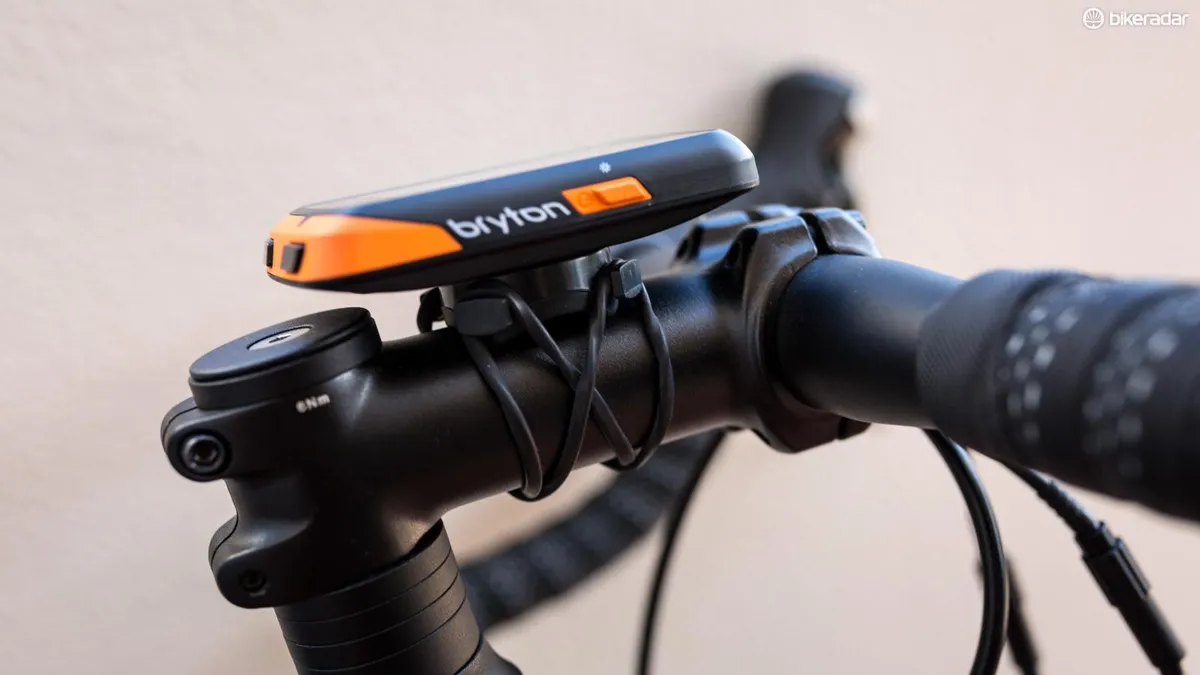The cycling computer market is fast and furious, and it’s rare to find a genuinely bad unit. Most offer a slew of data fields, GPS recording and an ever-growing set of wireless compatibility. And Bryton’s Rider 530 has plenty to offer being the Taiwanese tech company's most feature-rich cycling computer yet.
We’ve previously looked at the 310 and found, for a small unit,that it packed quite a punch when it came to features and functionality. The Bryton 530 is aimed at data hungry roadies and offers a similar feature-set to the Garmin 510.
Impressive battery life
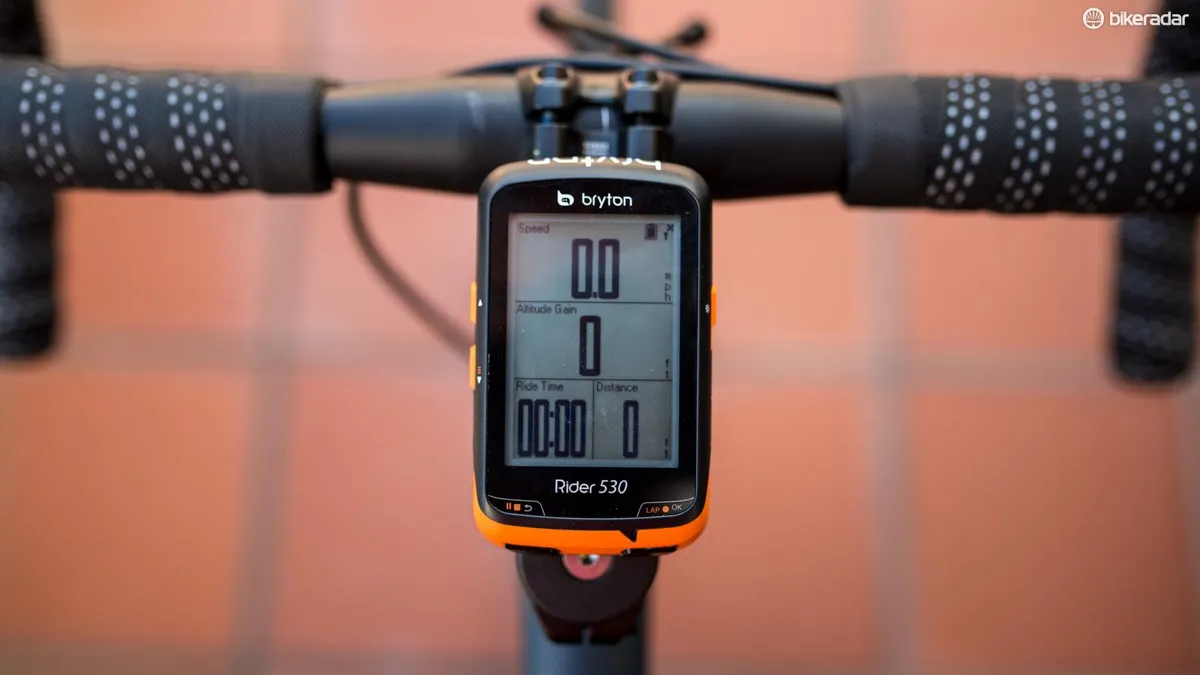
Like the 310, the 530 has a best-in-class battery life, and we found it be spot on the claimed 33-hour battery life — more than doubling the Edge 520's claimed 15-hours and outlasting the Edge 820's claimed 24-hours in Ultratrack mode — it always came as a surprise when the low battery notification flashed on the screen.
Speaking of the screen, it measures a large 2.6in and can display 12 metrics per page, and there are up to seven pages of customisable screens available. Even with 12 metrics on the screen the high-contrast unit still displays each box large enough to be read at a glance.
With such a large screen it’s by no means a small unit, measuring 54.9mmx92.2mmx17.6mm, but is surprisingly light at 76g. One of our testers noted that it's so light it "sort of feels like a toy in your hand rather than a cycling computer."
Bryton Rider 530 connectivity and features
As you’d expect, the Rider 530 features a built-in GPS chip as well as ANT+ connectivity. The unit does also feature low energy Bluetooth connectivity, but that’s to facilitate a connection to a smartphone and allows for wireless uploads to the Bryton app, as well as on-screen notifications. If Bluetooth isn’t your thing, the 530 also allows for automatic WLAN uploads.
There are pre-programmed workouts to determine max heart rate, FTP, lactate threshold and max anaerobic power
With only 300 hours of internal memory you’ll want to take advantage of these features because when it’s full the unit overwrites old activities to make room. The Bryton app offers plenty of info for the data nerds among us, and also allows for automatic Strava syncing.
Unlike the Rider 310, the Rider 530 does offer basic mapping abilities and breadcrumb navigation. There are three ways to choose your route; either by choosing a starting point and destination in the Bryton App, using a previous activity already on the device, or downloading a GPX file from Strava or the training app of your choosing.
As with most breadcrumb navigation, the zoom is always a bit too far out on the map, but the computer does tell you how far it is to your next turn. We didn’t have any trouble using GPX files and previous routes already loaded on the device, however when using the automatic route builder in the Bryton app it wanted to take us up a very bike-unfriendly four-lane highway, not ideal.
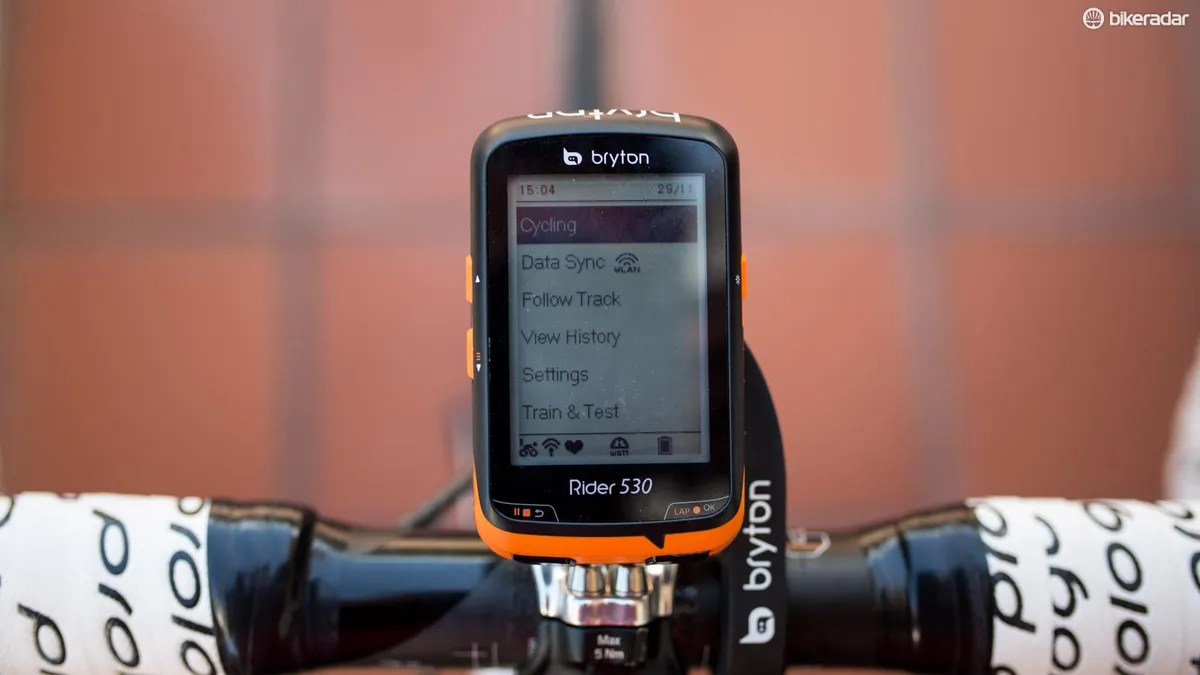
The 530 also allows you to plug in the details of a workout using heart rate, power, distance or time parameters to create specific intervals which the unit will guide you through. There are also pre-programmed workouts to determine max heart rate, FTP, lactate threshold and max anaerobic power.
It may be because we're used to the way that Garmin computers work, but the menus on the Rider 530 just didn’t feel intuitive and without fail we’d press the wrong button every time. With two buttons on the bottom, scrolling buttons on the left and power/backlight on the right it’s not that complex either but proved to be a constant source of frustration. The side buttons are quite small too and require a bit of force to push, and you'll definitely need to take winter gloves off to use them.
With over 72 metrics on offer, the 530 allows for all your basic data fields like speed, distance and heart rate, as well things like normalised power and training stress score. The computer also sees built-in sensors for monitoring temperature and gradient. We had no trouble syncing up heart rate monitors and power meters, and the connection was reliable through every activity.
Like the other Bryton units we’ve tested before, the screens change based on the presence of external sensors. So, if you forget your heart rate strap it won’t show a blank field. It's a nice touch because once you've defined the metrics you'd like to see, the 530 adapts to your activity and will only display relevant information.
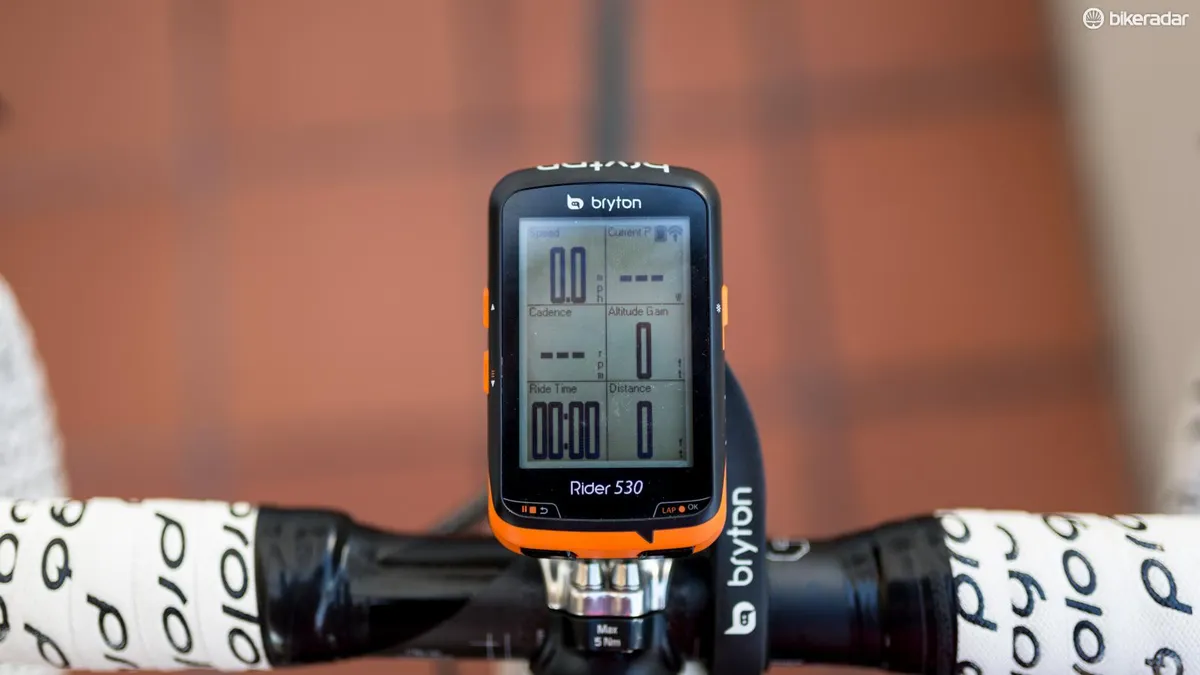
A recent firmware update now means that the Rider 530 is compatible with Shimano’s D-Fly ANT+ wireless transmitter and will show gear ratios and battery level in real time, allowing users to flip through the data pages using the hidden buttons on the Di2 hoods. Unfortunately, we didn’t have a D-Fly transmitter on hand to test out these features.
Mounting the Bryton 530
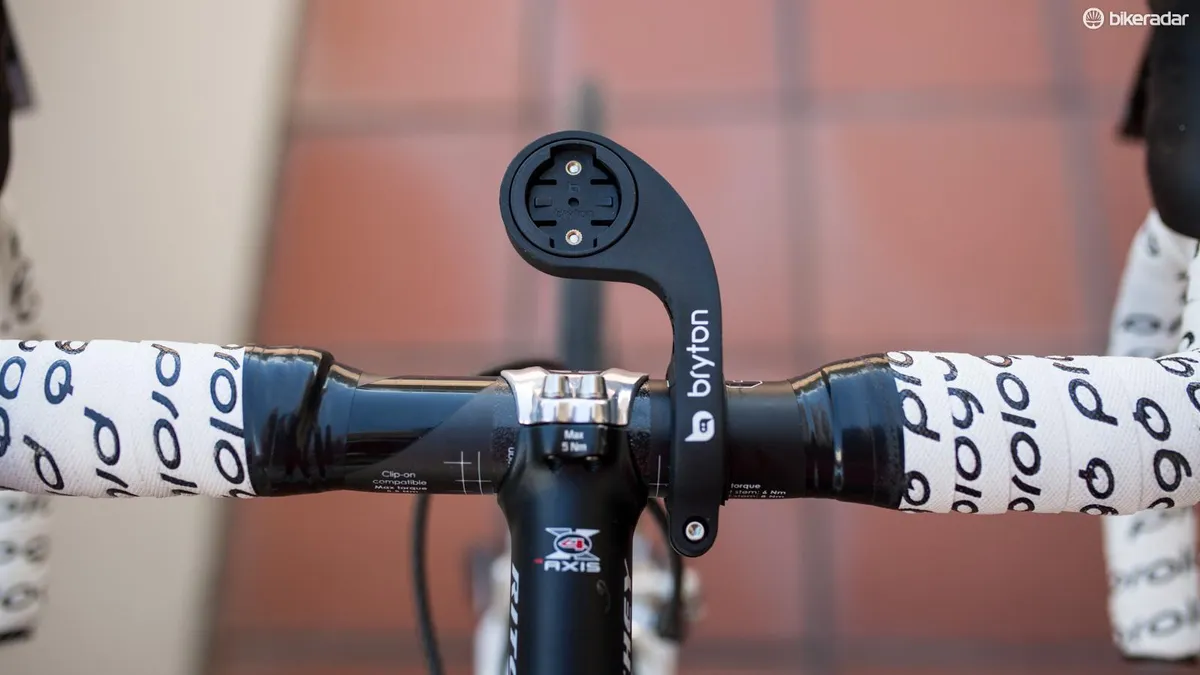
Using a familiar quarter-turn mounting system our sample unit came with an out-in-front mount that featured a hinge, making for simple installation. The unit also comes with a standard handlebar/stem mount, which is attached using rubber o-rings, but because of the unit's size it's best suited to the out-in-front mount. You can force the Rider 530 into a Garmin mount, but with the the mounts being slightly different you may damage the wings if you do this.
Final thoughts
Bryton has impressed us recently and the 530 continues that trend. Unlike most high-end head units the Rider 530 doesn't offer many of the 'premium' features like base maps, Strava Live segments, live tracking, recommended recovery time or a colour screen, but the Rider 530 only costs two-thirds the price of many of these units at £145 / $179 / AU$279.95.
While the menus were frustrating they could be learned, the only real fault was with the mapping. To be honest, it’s quite rare we use those features anyway and even then it was only the point-to-point navigation that caused concern.
The screen is big and clear making key data easy to read even at a quick glance and for those looking for a feature-packed head unit on a small budget, the Rider 530 is a great Garmin alternative.
